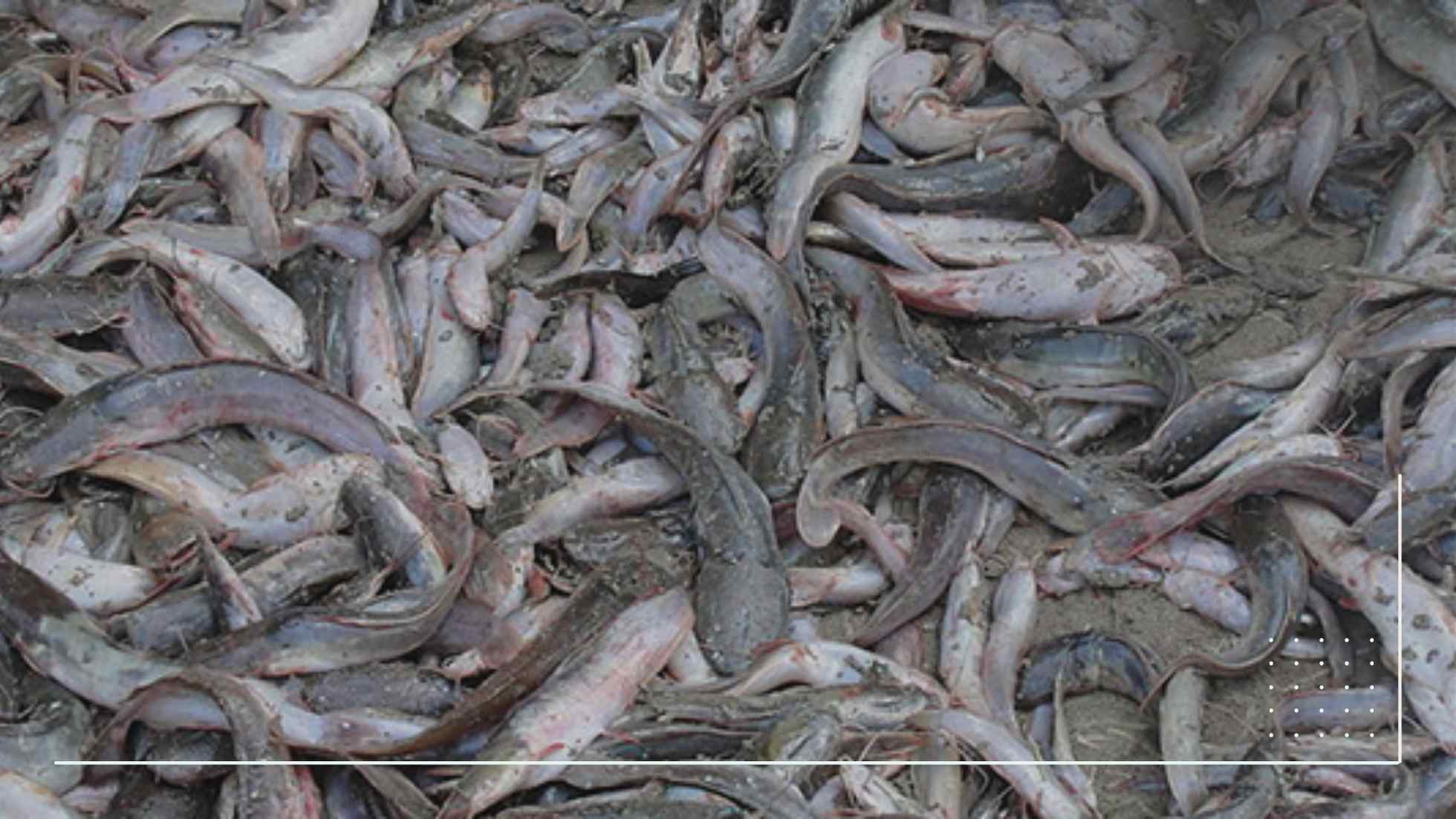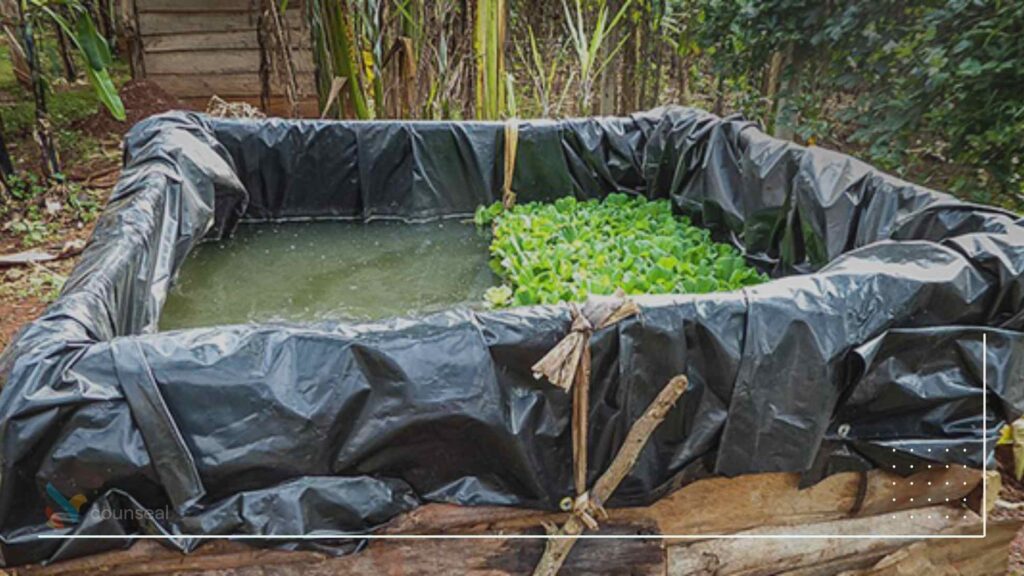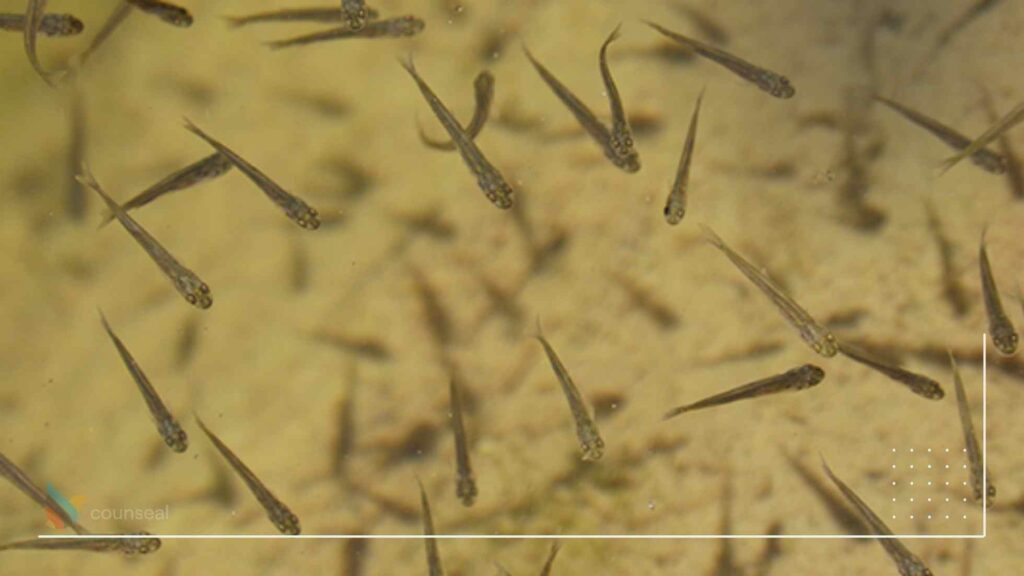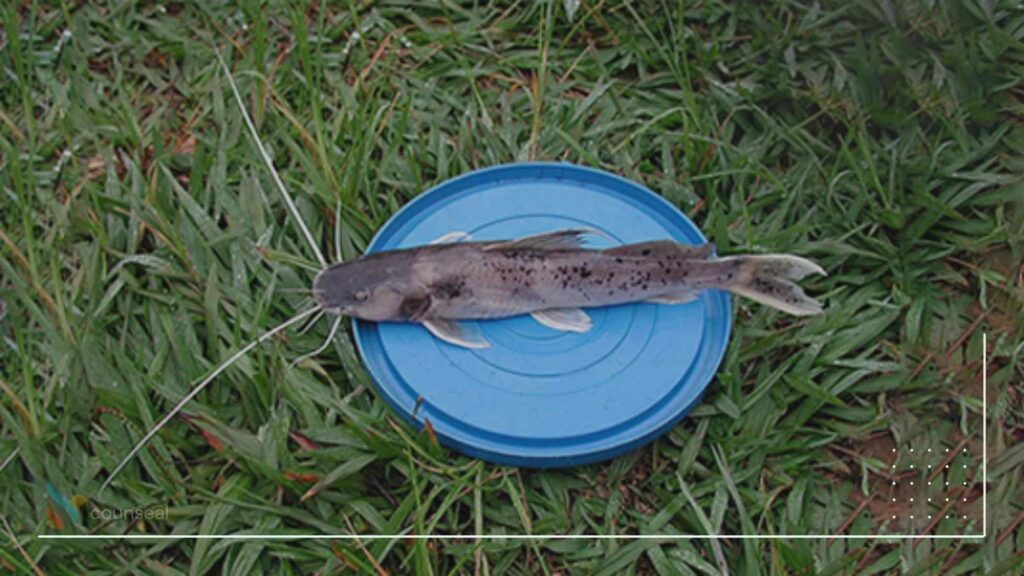4 Steps to Take to Start a Catfish Farm in Nigeria

by Counseal Team
Updated March 7, 2024

In 2015, Nigeria exported 160,000 tonnes of catfish. This was a 39% increase from 2010. Two years later, Nigeria produced 300,000 tonnes and there has been a constant rapid increase in production and consumption till now. So much that Nigeria is known as the world’s largest producer of catfish.
From 1951, when fish farming started in the country till now, Nigeria’s production of catfish keeps expanding. The Nigerian Government initially dominated catfish farming. And by 1991, when catfish farming had given Nigeria prominence in aquaculture in the world, the government provided an enabling environment for farmers.
We agree with you, now is the best time to start a catfish business in Nigeria.
In this guide, we will show you, step-by-step how to start a catfish farm in Nigeria. We will also touch on some red flags to avoid.
Quick Takes
How much does it cost to start this business?
Starting a catfish business in Nigeria can be a profitable venture, but it also requires a significant amount of capital, planning, and management. Some of the major costs involved in setting up and running a catfish farm are:
- Pond rentage or construction: You will need to acquire or build a suitable pond system for your catfish, depending on the scale and type of your farm. The cost of renting a pond can range from N10,000 to N50,000 per year, while the cost of constructing a pond can range from N100,000 to N500,000 or more, depending on the size, design, and location of the pond.
- Pond preparation: You will need to clear, de-mud, lime, and disinfect your pond before stocking your catfish. You will also need to install nets, pipes, erosion channels, and other accessories to ensure the optimal condition of your pond. The cost of pond preparation can range from N20,000 to N100,000 or more, depending on the condition and complexity of your pond.
- Procurement of juveniles: You will need to buy or breed healthy and disease-free catfish juveniles to stock your pond. The cost of buying juveniles can range from N35 to N50 per fish, depending on the size and quality of the fish. Assuming you want to stock 1,000 fish, you will need to spend between N35,000 to N50,000 on juveniles.
- Feeding of catfish: You will need to feed your catfish with quality and nutritious feed to ensure their growth and development. The cost of feeding catfish can vary depending on the type, quantity, and frequency of feed. On average, you will need about 1 kg of feed to make one catfish gain 1 kg of weight. Assuming you want to raise your catfish to an average weight of 1 kg, you will need about 1,000 kg of feed for 1,000 fish. A bag of feed, which usually contains 15 kg, can cost between N8,000 to N12,000, depending on the brand and quality of the feed. Therefore, you will need about 70 bags of feed, which will cost between N560,000 to N840,000.
- Other expenses: You will also need to consider other expenses, such as labor, electricity, water, medication, transportation, storage, processing, marketing, and taxes. These expenses can vary depending on the scale, location, and management of your farm. On average, you can expect to spend between N200,000 to N500,000 or more on these expenses.
In summary, the total cost of starting a catfish business in Nigeria can range from N815,000 to N1,990,000 or more, depending on various factors. Using the exchange rate of 1,480.58 Naira per US Dollar, this is equivalent to $550.27 to $1,344.34 or more.
How much can you make per month?
The amount of money you can make per month from catfish farming in Nigeria depends on various factors, such as the scale, location, and management of your farm, the quality and quantity of your fish, the market price and demand, and the production and marketing costs. Some of the possible scenarios are:
- If you start with 500 catfishes and raise them to an average weight of 1 kg in 4 months, you can sell them for N800 per kg, making a total revenue of N400,000. Assuming your total cost is N460,000, your net profit would be N60,000 per month.
- If you start with 1,000 catfishes and raise them to an average weight of 1.5 kg in 6 months, you can sell them for N900 per kg, making a total revenue of N1,350,000. Assuming your total cost is N1,000,000, your net profit would be N350,000 per month.
- If you start with 2,000 catfishes and raise them to an average weight of 2 kg in 8 months, you can sell them for N1,000 per kg, making a total revenue of N4,000,000. Assuming your total cost is N2,500,000, your net profit would be N1,500,000 per month.
- If you start with 5,000 catfishes and raise them to an average weight of 2.5 kg in 10 months, you can sell them for N1,100 per kg, making a total revenue of N13,750,000. Assuming your total cost is N7,500,000, your net profit would be N6,250,000 per month.
These are just some examples of the potential income you can make from catfish farming in Nigeria. However, these are not guaranteed and they may vary depending on the market conditions and your specific situation. Therefore, it is advisable to do a detailed catfish farming business plan that considers your goals, budget, and resources.
What is the minimum required to start this business?
The minimum required to start a catfish business in Nigeria depends on the scale and type of your farm, as well as the location, equipment, medical, irrigation, and labour costs. Some of the major costs involved in setting up and running a catfish farm are:
- Pond rentage or construction: You will need to acquire or build a suitable pond system for your catfish, depending on the scale and type of your farm. The cost of renting a pond can range from N10,000 to N50,000 per year, while the cost of constructing a pond can range from N100,000 to N500,000 or more, depending on the size, design, and location of the pond.
- Pond preparation: You will need to clear, de-mud, lime, and disinfect your pond before stocking your catfish. You will also need to install nets, pipes, erosion channels, and other accessories to ensure the optimal condition of your pond. The cost of pond preparation can range from N20,000 to N100,000 or more, depending on the condition and complexity of your pond.
- Procurement of juveniles: You will need to buy or breed healthy and disease-free catfish juveniles to stock your pond. The cost of buying juveniles can range from N35 to N50 per fish, depending on the size and quality of the fish. Assuming you want to stock 1,000 fish, you will need to spend between N35,000 to N50,000 on juveniles.
- Feeding of catfish: You will need to feed your catfish with quality and nutritious feed to ensure their growth and development. The cost of feeding catfish can vary depending on the type, quantity, and frequency of feed. On average, you will need about 1 kg of feed to make one catfish gain 1 kg of weight. Assuming you want to raise your catfish to an average weight of 1 kg, you will need about 1,000 kg of feed for 1,000 fish. A bag of feed, which usually contains 15 kg, can cost between N8,000 to N12,000, depending on the brand and quality of the feed. Therefore, you will need about 70 bags of feed, which will cost between N560,000 to N840,000.
- Other expenses: You will also need to consider other expenses, such as labour, electricity, water, medication, transportation, storage, processing, marketing, and taxes. These expenses can vary depending on the scale, location, and management of your farm. On average, you can expect to spend between N200,000 to N500,000 or more on these expenses.
In summary, the minimum cost of starting a catfish business in Nigeria can range from N815,000 to N1,990,000 or more, depending on various factors. Using the exchange rate of 1,480.58 Naira per US Dollar, this is equivalent to $550.27 to $1,344.34 or more.
What are the best states to start this business?
The best states to start a catfish farming business in Nigeria are those that have favourable climatic and water conditions, adequate infrastructure and access to markets, and supportive policies and regulations for the sector.Some of the best states for catfish farming in Nigeria are:
- Lagos State: The most populous and commercial state in Nigeria, with a high demand and consumption of catfish. Lagos State has a coastal location, abundant water resources, and a well-developed fish farming industry. Lagos State also has a conducive environment for catfish processing and marketing, with many cold rooms, smoking kilns, and distribution channels.
- Delta State: The largest producer of catfish in Nigeria, with an annual production of over 70,000 metric tons. Delta State has a rich aquatic ecosystem, with many rivers, lakes, and ponds. Delta State also has a vibrant fish farming association, the United Ufuoma Fish Farmers Association (UUFFA), which provides training, inputs, and services to its members.
- Ogun State: The second-largest producer of catfish in Nigeria, with an annual production of over 50,000 metric tons. Ogun State has a favourable climate, fertile soil, and abundant water supply for catfish farming. Ogun State also has a strong market for catfish, especially the Ofada variety, which is known for its aromatic flavour and nutritional value.
- Kaduna State: The third-largest producer of catfish in Nigeria, with an annual production of over 40,000 metric tons. Kaduna State has a semi-arid climate, a large irrigation scheme, and a high demand for catfish. Kaduna State also has a supportive policy framework for catfish farming, with incentives, subsidies, and loans for fish farmers.
These are some of the best states for catfish farming in Nigeria that you can consider for your business. However, you should also do your own research and feasibility study before making a final decision
What are the known examples of this business?
Some of the known examples of catfish farming businesses in Nigeria are:
- Aqua Farms: A large-scale catfish producer that operates a 100-hectare farm and a 20,000-metric-tonne processing plant in Ogun State. Aqua Farms supplies fresh and smoked catfish to local and international markets, and also provides training and consultancy services to other fish farmers.
- Tuns Farms: A medium-scale catfish producer that operates a 10-hectare farm and a 5,000-metric-tonne processing plant in Osun State. Tuns Farms produces and sells fresh and frozen catfish, and also offers feed, fingerlings, and equipment to other fish farmers.
- Opeyemi Farms: A small-scale catfish producer that operates a 1-hectare farm and a 500-metric-tonne processing plant in Lagos State. Opeyemi Farms specialises in producing and selling smoked catfish, and also provides training and mentoring to aspiring fish farmers.
These are some of the successful catfish farming businesses in Nigeria that you can learn from and emulate.
Ready to launch a profitable catfish firm? Let’s jump in!
Step 1: Research
Like any other business, research is essential. You can find helpful materials for your research on Google. The following are the important items you must investigate thoroughly:
Know your catfish
The most common species of catfish in Nigeria are Clarias gariepinus, Heterobranchus bidorsalis, Clarias AND Heterobranchus hybrid (Heteroclarias) and Clarias nigro-digitatus.
The heterobranchus species are common in the southeast while the Clarias species are common in the western parts of Nigeria. Note also that these two species have been found to grow faster than others.
Also, you need to research where to get your swim up fry or fingerlings. It is advisable to look at suppliers who have been in business for a while.
Know your soil
You cannot use any type of soil for catfish farming. It is important to know the soil type, soil texture, and mineral of the soil. Hence, a soil test is essential.
The soil test will guide you in choosing the type of pond and depth of the pond. It will also provide you with information on the water retention volume of the pond.
Know your pond:
The following are basic for any fish pond:
- Dukes, also known as pond walls
- Inlet and outlet channels for water
- Water controls: these control the rate and level of water in the pond.
- Harvesting tools: Sweep nets, shock tanks ,etc.
- Roads and tracks for easy navigation.
For Catfish farming the following are the commonly used ponds in Nigeria:
- Plastic pond
- Tarpaulin pond
- Concrete pond and
- Earthen pond
We will come back to these pond types..
Security measure
You are wondering, is it not just fish? Yes, it’s just catfish but they are equivalent to good money. And let’s not forget the good taste too. So, you need to research which measures are good for your farm. Some effective measures are:
- Don’t cite your farm in a hidden location
- Ensure you secure your ponds with nets
- Security cameras are handy
- You can’t go wrong with having a barbed wire fence
- A well lighted farm is no place to hide
Step 2: Tailor your budget
Some of us like to work strictly with plans, so if you already have a budget, you now know where your budget fits in from your research. If you don’t have one yet, it’s fine too because your research will help you know how much you need.
However, I will still give you an idea of how much a starting catfish farm can cost. From our discussion under research, some of the essential things you need to consider on your budget are; Land, pond construction, cost of swim up fry or fingerlings, cost of security, Cost of feed, workers’ payments ,etc.
Below is an overview of the cost of setting up a catfish farm depending on location and the factors aforementioned.
| Size of Farm | Land size | Number of catfish | Cost |
| Small scale catfish farm | 1-3plots | 1000 | ₦400,000-₦4000,000 |
| Large scale catfish farm | 5-25 acres | 5000 and above | ₦5000,000 – ₦30,000,000 |
Step 3: Design your pond
There are types of ponds that are specific to catfish in Nigeria:
Plastic pond:
Plastic ponds come in various sizes and are volumes from 1000 litres to 20,000 litres. They are made of plastic water tanks. This is a temporary type of pond and cannot be used for large scale farming.

Tarpaulin pond:
These are portable fish ponds that are easy to transport, set up and assemble. They are made from tarpaulin materials. They come in different sizes. For instance the smaller ones can accommodate about 300 fish while the bigger ones can accommodate about 1000 fish and above. This is also a temporary pond.

Concrete pond:
There are two methods of concrete ponds; the flow through method and the water recirculation method. The former requires regular release of water for pond maintenance and increased oxygen for the fish. The latter, just as its name implies, is simply a system where water is recycled. It reduces heating and cooling costs.
Concrete ponds are expensive hence, you don’t want to spend a lot of money on a concrete pond that will not last. So, don’t do the following:
- Construct with clay soil. This makes your pond prone to leakages.
- Construct with thin concrete. Your concrete must be 4-6 inches thick
- Construct a porous pond. Concrete is prone to leaching lime and other harmful chemicals. To avoid this you have to seal your pond with waterproofing chemicals such as vinegar acid.
Earthen pond:
This is the largest of them all and it is constructed from soil materials. They are also the most common for large scale catfish farming in Nigeria. There are two types; the embankment pond and the excavated or dug-out pond.
The embankment ponds are constructed through damming a small stream and can be constructed on stream sites where the slope is steep enough to limit the size of the dam. Excavated or dug-out ponds are just as the name implies constructed by digging out an area fed by springs and run off. Simply put, a hole in the ground.
Step 4: Start Farming
It’s time to start your catfish farm if you’ve followed the 3 steps above!
Your pond is now ready for production. First thing to do at this point is get a healthy supply of catfish, swim up fry or fingerlings. Now is also the time to decide if you want to have a hatchery for selling out fingerlings or you want to sell the ‘big fish’.
I’m sure you are already wondering what swim fry and fingerlings mean. I’ll explain, relax.
A swim fry is a stage in the life cycle of a catfish. As soon as the spawn or eggs assume the shape of the fish and grow to about 1–2 cm it is known as fry. At this stage they are primarily smaller size zooplankton feeders. It takes about 7 to 10 days for the spawn to grow up to the fry stage. Once the yolk is used up and fish have developed mouth parts, the fish will “swim up” to the surface of the tank and search for food. This is the swim fry stage.

Once the fry is up to 10–15 cm size or roughly equal the size of a finger it is called fingerling. It is the proper size for stocking in table fish production ponds. It takes about 30–60 days for the fry to grow up to fingerling size.

A juvenile catfish is between 6-8 weeks old. This is slightly older than a fingerling which is between 3-4 weeks. You need either of the two to start your catfish farm.

Now it’s all coming together.
Next thing to consider at this point is the feed for your catfish. Feeds for Catfish are mainly plant based with some fishmeal and animal protein. It is vital to get a good supplier and stick with them.
Another important thing is your farm management and team. Be sure that your farm manager is experienced and has people skills. You also need a consistent Veterinary doctor. One thing I’ve learned is that you get tremendous output from your team when you treat them well. So note it.
Now, you have a catfish farm! Well done!
But, there will be red flags you must look out for…
Red flags to avoid for Catfish Farming in Nigeria
Farm Management issues
You might not want to spend much money setting up your catfish farm and then lose it all. So, you must avoid sentiments during recruitment. If you can’t trust your family and friends,then don’t involve them. Make sure you recruit trusted and experienced professionals.
It is also important to keep a constant check on your staff. Do this through regular reports, video chats, regular picture updates with backing documents. This includes keeping close track of financial books. No stone must be left unturned when it comes to regular information of the farm.
Don’t use different suppliers
It is safest to use one trusted supplier rather than testing too many suppliers. For your fingerlings and feeds, not sticking to one supplier might reduce the quality of your production. You can have another just for backup but having more than that is risky.
For instance:
A quality bred fingerlings should weigh between 13-15grams. But, some suppliers who want quick profit don’t mind breeding with any fish. And, they don’t mind what size the fingerlings are. You will be open to the risk of producing less quality fish if you buy from such suppliers.
Avoid treating your catfish yourself
The same way self medication is wrong for humans, treating your catfish yourself is wrong. Except of course you are a Vet doctor. No matter how experienced or vastly read you are about catfish,the role of a Vet doctor cannot be overemphasized.
Now to the money part.
Catfish farming in Nigeria has gone beyond just producing fish and selling them. There diverse avenues to make money from your catfish farm:
Tips for making profit from Catfish Farming in Nigeria
Sell fingerlings/ juvenile: This requires you to have a hatchery from which the fingerlings or juveniles will be harvested for sale. This means you don’t have to wait till the catfish is table size or bigger to sell. Some farms in Nigeria only focus on this area but you can do more…
Sell freshly harvested catfish: This category has the highest number of demand. You need a strong marketing team who will reach out to eateries, hotels, Bars, caterers ,etc. The grown fish is consumed widely all across Nigeria.

Sell frozen catfish: You could also get good freezers to store harvested fish that will be sold later. You can sell this in kilos or in boxes depending on what your customers like.

Sell smoked catfish: Another way to make money from catfish is by smoking and drying. You could either use the local method or buy the special made machines for this. The machine method is actually faster and gives more output.
The best business to venture in with the economy of Nigeria is the food business. And, catfish is food. The demand for catfish in Nigeria keeps rising and the sector expands everyday. Hence, this is a good time to start your catfish farm in Nigeria. With the steps I have shared in this article,you can start your catfish farm seamlessly.
We would love to read your comments on this article. If you still have any concerns about starting a catfish farm in Nigeria, speak with one of our experts.
Frequently Asked Questions
What is catfish and why is it important?
Catfish is a type of freshwater fish that belongs to the order Siluriformes. Catfish has a distinctive appearance, with a flat head, whisker-like barbels, and a scaleless body. Catfish is important for several reasons, such as:
- It is a source of high-quality protein, omega-3 fatty acids, vitamins, and minerals for human consumption.
- It is a source of income and employment for many rural and urban populations, especially women and youth.
- It is a source of organic fertiliser and biogas for crop production and energy generation.
- It is a source of biodiversity and ecosystem services, such as water purification and nutrient cycling.
What are the benefits of catfish farming in Nigeria?
Catfish farming in Nigeria has many benefits, such as:
- It meets the high demand and consumption of catfish in the country, which is one of the most preferred fish species.
- It reduces the dependence on fish imports, which saves foreign exchange and boosts local production.
- It creates jobs and income for rural and urban populations, especially women and youth.
- It contributes to the national food security and self-sufficiency goals.
- It supports the diversification of the agricultural sector and the economy.
What are the challenges of catfish farming in Nigeria?
Catfish farming in Nigeria also faces some challenges, such as:
- Low productivity and quality due to poor fingerlings, inputs, practices, and infrastructure.
- High production and marketing costs due to inadequate access to credit, extension, storage, processing, and transportation facilities.
- Inadequate policies and regulations that affect the competitiveness and profitability of catfish farmers and processors.
- Environmental and social impacts of catfish farming, such as water pollution, soil erosion, pest and disease outbreaks, and land conflicts.
What are the steps to start a catfish farming business in Nigeria?
The steps to start a catfish farming business in Nigeria are:
- Step 1: Do a feasibility study and a business plan. This will help you assess the market potential, the production requirements, the financial projections, and the risks and opportunities of your catfish farming business.
- Step 2: Acquire land and prepare it for catfish cultivation. You will need to find a suitable location, size, and type of land for your catfish farm. You will also need to clear, de-mud, lime, and disinfect your land before constructing your pond system.
- Step 3: Choose the right variety and quality of catfish seeds. You will need to select the best catfish variety for your agro-ecological zone, soil type, and market preference. You will also need to buy certified and disease-free seeds from reputable sources.
- Step 4: Plant and manage your catfish crop. You will need to follow the best agronomic practices for catfish farming, such as proper spacing, fertilisation, irrigation, weeding, pest and disease control, and harvesting.
What are the best catfish varieties for Nigeria?
The best catfish varieties for Nigeria are those that are adapted to the local climatic and water conditions, resistant to pests and diseases, high-yielding, and acceptable to the consumers. Some of the popular catfish varieties for Nigeria are:
- Clarias gariepinus: Also known as African sharptooth catfish, this is the most widely cultivated catfish variety in Nigeria. It has a fast growth rate, a high feed conversion ratio, and a high tolerance to low dissolved oxygen and high salinity. It can grow up to 1.5 kg in 6 months.
- Heterobranchus longifilis: Also known as African catfish, this is the second most widely cultivated catfish variety in Nigeria. It has a high growth rate, a high feed conversion ratio, and a high tolerance to low dissolved oxygen and high temperature. It can grow up to 2 kg in 8 months.
- Hybrid catfish: This is a cross between Clarias gariepinus and Heterobranchus longifilis, which combines the desirable traits of both parents. It has a higher growth rate, a higher feed conversion ratio, and a higher resistance to diseases than either parent. It can grow up to 2.5 kg in 10 months.
How can I improve the productivity and profitability of my catfish farm?
You can improve the productivity and profitability of your catfish farm by:
- Adopting improved catfish varieties that suit your agro-ecological zone, soil type, and market preference.
- Using efficient and sustainable irrigation methods, such as drip, sprinkler, or recirculating aquaculture systems (RAS), to optimise water use and reduce water pollution.
- Implementing integrated pest and disease management (IPM) strategies, such as biological control, and judicious use of pesticides, to minimise losses and environmental impacts.
- Adding value to your catfish by processing, branding, and packaging it according to the quality standards and consumer preferences.
- Accessing reliable and affordable sources of credit, extension, storage, processing, and transportation facilities to reduce production and marketing costs and increase income.
- Joining or forming cooperatives, associations, or clusters of catfish farmers and processors to enhance collective bargaining power, access to inputs and services, and market linkages.
What are the environmental and social impacts of catfish farming and how can I mitigate them?
Catfish farming has both positive and negative impacts on the environment and society, such as:
- Positive impacts: Catfish farming provides food, income, and employment for millions of people, especially in rural areas. Catfish farming also supports biodiversity, ecosystem services, and cultural heritage.
- Negative impacts: Catfish farming consumes a large amount of water, land, and energy, and contributes to water pollution, soil erosion, and greenhouse gas emissions. Catfish farming also exposes farmers and consumers to health risks from pests, diseases, and pesticides. Catfish farming also causes social conflicts over land, water, and labour rights.
You can mitigate the negative impacts of catfish farming by:
- Adopting climate-smart and eco-friendly catfish farming practices, such as improved varieties, irrigation, pest and disease management, and mechanisation, that reduce water, land, and energy use, and water pollution and greenhouse gas emissions.
- Adopting organic and fair trade catfish farming practices, such as bio-pesticides, and biocontrol agents, that enhance soil health, water quality, and product quality, and protect human health and animal welfare.
- Adopting social and ethical catfish farming practices, such as respecting land, water, and labour rights, ensuring gender equity and social inclusion, and promoting local knowledge and culture.




